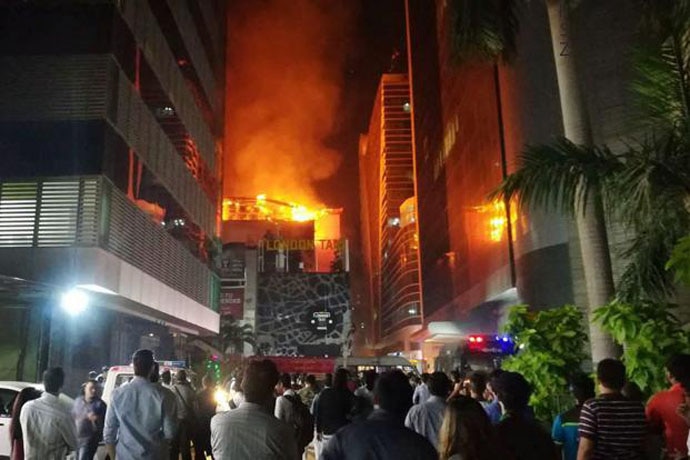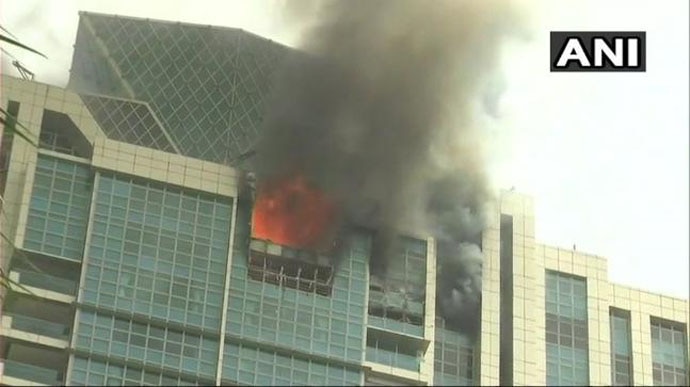Another fire, same old story: Why Mumbai high-rises are tinderboxes

Mumbai has shot up vertically like Jack’s beanstalk, but this is no fairy tale.
On August 22, four people were killed and 16 others injured in a fire in a Mumbai high-rise. This was the 13th major fire incident in the city this year, taking the death toll from such cases to 26.
Mumbai: A Level-2 fire has broken out in Crystal Tower near Hindmata Cinema in Parel area. Ten fire fighting tenders have rushed to the spot. More details awaited pic.twitter.com/kvH3vhwgkw
— ANI (@ANI) August 22, 2018
Last year in December, 14 people had been killed in a blaze at the upmarket Kamala Mills building. In the same month, 12 people were killed in a fire at a snacks-manufacturing unit in Saki Naka.
What were these lives lost to?
To a city bursting at the seams, to “development” that is myopic and one-directional, to desperate people willing to cut corners, to a corrupt, and also overburdened, system that allows them to.
Mumbai, being an island, is naturally starved for land. Unable to afford the ever-increasing horizontal spread that is the NCR (National Capital Region), it has shot up vertically like Jack’s beanstalk. But this is no fairy tale, Mumbai’s infrastructure is a terrible nightmare.
The August 22 incident took place in Crystal Tower, located in Parel, central Mumbai’s erstwhile mill district.
Ideally, buildings are supposed to have clearly marked fire exits, functional fire extinguishers, and a dedicated water supply unit for fires.
The rule violations found at Crystal Tower so far are — the building had no occupation certificate (OC), no firefighting system, no fire alarms, no fire exits. The refuge area, where residents of high-rises are supposed to gather in case of a fire, had flats built on it.

This should have been shocking, but violations of safety regulations are the norm in Mumbai. Real estate in the space-starved city is so precious that people cling on for years even to decrepit buildings declared unsafe for habitation by the Brihanmumbai Municipal Corporation (BMC).
Even Crystal Tower had been served a notice for unauthorised occupation as far back as 2016. Residents say they were forced to move in despite the building not getting an OC as the builder had refused to pay for alternative accommodations.
This again, is not rare. People start living in unsafe buildings, the authorities serve them evacuation notices, either the builder or the residents move court, and life goes on just as usual. Until disaster strikes.
Days before the Kamala Mills fire, DNA had reported that of the 4,647 buildings inspected by the Mumbai Fire Brigade (MFB), none had adhered to fire safety norms.
Worryingly, that terrible tragedy, and the many after it, seems to have changed little.
As per the Maharashtra Fire Prevention and Life Safety Measures Act, 2009, buildings are supposed to hold fire audits twice a year, and submit fitness certificates to the fire brigade. Yet, incident after incident has shown that the buildings either did not adhere to safety norms, or residents were clueless about how to use extinguishers.

Also, in Mumbai, fire-fighting has challenges of its own.
Roads are so narrow that the fire brigade finds no space to maneuver its trucks with turntable ladders. In high-rises, if buildings do not have functional fire-fighting equipment of their own, fire-fighters have to lug heavy tools up the many flights of stairs, since lifts can obviously not be used during fires. This wastes both precious time and energy. Also, in tall buildings, walkie-talkies face signal problems, making it difficult for firemen to communicate with each other.
Here’s another interesting fact — in a city of skyscrapers, the fire brigade is equipped to fight blazes only till the 27th floor, it doesn’t have snorkels with a reach beyond that.
In the case of Crystal Tower, the builder has been arrested. This too is typical, in the aftermath of every major incident, some people are arrested, a few civic officials suspended, a few illegally constructed buildings demolished.
But kneejerk reactions cannot solve endemic problems. The many blazes in Mumbai, and the challenges the fire brigade faces while fighting them, tell the same story — Maximum City is a tinderbox, always just one step away from disaster.
How many such disasters will it take before the authorities, and also the residents, wake up? The cost of the delay is being paid with human lives.

